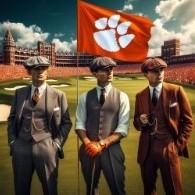-
Posts
334 -
Joined
-
Last visited
Profile Information
-
Gender
Male
-
Location
Minneapolis, MN
Player Profile
-
Age
30-39
-
Swing Speed
91-100 mph
-
Handicap
11
-
Frequency of Play/Practice
Multiple times per week
-
Player Type
Casual
-
Biggest Strength
Short Game
-
Biggest Weakness
Approach
-
Fitted for Clubs
Yes
Recent Profile Visitors
4,086 profile views
storm319's Achievements

(1/14)
404
Reputation
-
Taylormade has historically measured core compression, not the compression of the entire ball so their numbers will be less than sources that measure overall compression.
-
The AIR looks to be replacing the Pro Soft so it will be the lowest compression cast urethane offering.
-
Only Acushnet, Bridgestone, and Callaway are producing complete balls at volume in the US (Bridgestone/Callaway US production is limited to their multilayer urethane models and outsource the rest to Asian white label factories, Acushnet produces all models in Massachusetts in addition to some of their ProV1 volume in Thailand). Taylormade’s Liberty, SC plant is limited to cast thermoset cover assembly and painting/stamping from core/mantle assemblies produced at Nassau (South Korea) and Foremost (Taiwan). As for the OP, no DTCs currently produced in the US (Acushnet’s Union Green DTC brand was but I believe the brand was shelved).
-

2024 Masters Pool Sponsored by Titleist and Vokey Wedges
storm319 replied to Golfspy_CG2's topic in Deals & Contests
Cut: +3 LA: Neal Shipley -

Shafts similar to HZRDUS Smoke Black RDX
storm319 replied to TypicalCostaGuy's topic in Golf Balls/Shafts/Grips
HZRDUS RDX Red maybe? The profile is suppose to be similar butt to mid with a softer tip than the Black (possibly softer than the OP is looking for but tipping is always an option). -
If you are primarily concerned with resale value, the HZRDUS Red RDX will likely fetch more given the higher volume of TM Ventus shafts in existence and due to the persisting perception of “made for” shafts that some have. With that said, these are likely on a similar level from a quality perspective (keeping in mind that quality is really defined as the manufacturers ability to deliver as close to the same spec consistently…more simply put quality = consistency).
-

Is this the end for my dented driver?
storm319 replied to BobSled's topic in Club Making/Repair & DIY Projects
Keep in mind that the M3 was released 6 years ago so I wouldn’t expect much when contacting Taylormade (warranty for most OEMs is 1-2 years). Really no way to fix, but you should be able to find a fairly inexpensive replacement. -

Golf Ball Similar to Titleist Tour Speed
storm319 replied to Jeremypeeps1526's topic in Golf Balls/Shafts/Grips
The new tpu AVX or the Tour B RX are probably going to be closest. -
Regular retail of $40 per dozen ($160 for the 4 dozen pack) has remained unchanged from last year, but these are almost always on sale which clouds the actual intended price points (generally 2 for $70 or 4 for $120, the 4 for $99.98 late last year was not the norm). This time of year is not generally a time for sales, but my guess is that DSG is trying to compete with some of the new release buzz from the big OEMs.
-
I believe the XR stock offering was a made for version of the LZ Blue (lighter, softer, higher torque), so not really sure what would be similar (definitely not anything from the HZRDUS line). Either way, 100% agree that getting fit is better than trying to find something similar to a shaft that may not even be an optimal fit now.
-
Prices on these sites are highly dependent on demand, available inventory, and age. They have had approximately 3 years of collection for the 2021 model vs 1 year for the 2023 and the demand is generally higher for the current generation. Ultimately the material performance difference probably doesn’t warrant the price difference (granted Titleist has been making the ProV1 lower in both spin/apex over the past few cycles which some are not a fan of).
-

(2024) New Release Titleist Golf Balls
storm319 replied to GolfSpy_APH's topic in Golf Balls/Shafts/Grips
Exactly. The “test” cycle is way too late to have an impact on the upcoming release (granted it is a fairly inexpensive marketing and customer feedback effort). -
In addition to the professional tours, there was doubt as to whether the NCAA and many local/state organizations that host elite amateur competitions were going to adopt the MLR which would have resulted in inconsistent regulation at the intended level. Given that the ruling bodies would not have had full control on where/when the MLR would be adopted (and it ultimately not been adopted in all scenarios that they intended it to be), a universal change was simpler long term (and preferred by the majority of the biggest stakeholders vs permanent bifurcation).
-
Not the team sport element, but the interactive element between players makes the comparison to golf pointless. No one is saying that golf would cease to exist if the ruling bodies were to bifurcate, but IMHO it would be worse off without a uniform set of regulations (and most sports would be better off with a global set of regulations at least at adult levels). Also, the other non-interactive sports have much clearer lines of separation between different levels of play whereas those lines are blurred in the game of golf (how often do you see amateurs competing in random games in any of the professional sports you mentioned?). Bifurcation adds complexity/cost to an already complex/expensive game and the game is better off under a uniform set of rules (the ruling bodies making changes like this definitely threatens that).







